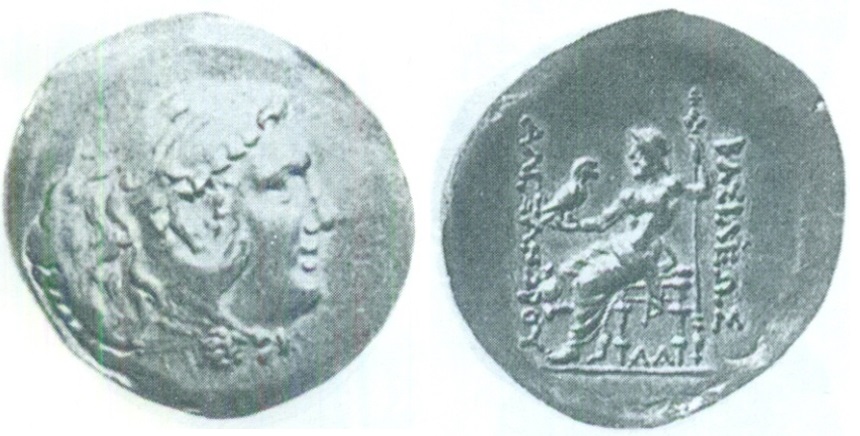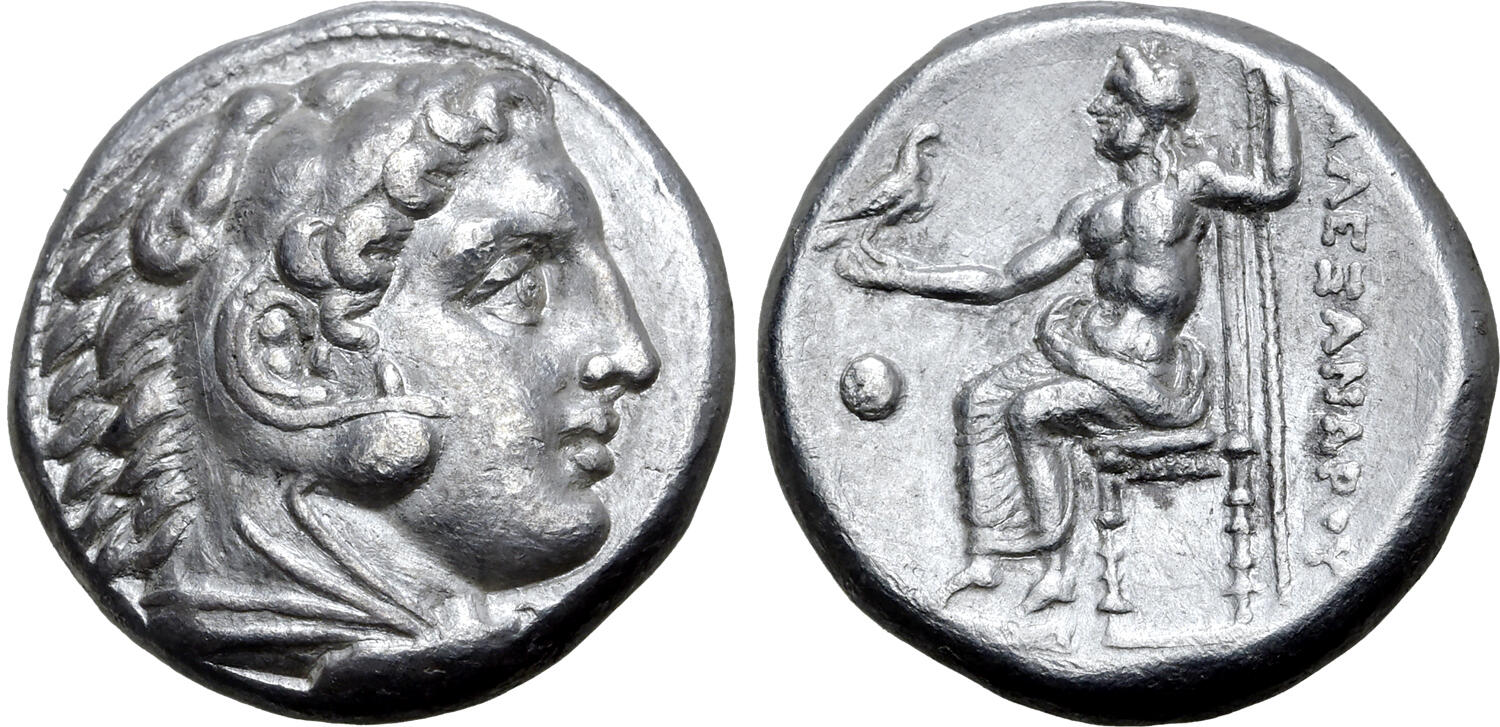Latest revision as of 06:50, 14 November 2023
150 BCE - 100 BCE | BAΣΙΛΕΩΣ AΛΕΞANΔΡΟΥ
Overstriking coin
Mesembria 814 London BM.jpg
Overstruck variety
Alexander the great tetradrachm.jpg
Description
| ObverseInscription or printing placed on the obverse.:
|
Head of Herakles right, wearing lion skin headdress.
|
ReverseInscription or printing placed on the reverse.:
|
BAΣΙΛΕΩΣ AΛΕΞANΔΡΟΥ (Greek) Zeus enthroned left, holding eagle and scepter. Under the throne, ΛΑ. In left field, Corinthian crested helmet.
|
Mint and issuing power
| MintIdentifies the place of manufacture or issue of a numismatic object.:
|
Mesembria
|
Ancient regionAncient region.
|
Thrace
|
Modern countryModern country: Bulgaria
|
AuthorityIdentifies the issuing power. The authority can be "pretended" when the name or the portrait of X is on the coin but he/she was not the issuing power. It can also be "uncertain" when there is no mention of X on the coin but he/she was the issuing power according to the historical sources:
|
Alexander III the Great (Argead king, 336-323 BC)
|
Chronology
| FromIdentifies the initial date in a range assigned in a numismatic context. 150 BCE toIdentifies the final date in a range assigned in a numismatic context.. 100 BCE
|
hellenistic periodTime period of the numismatic object.
|
Physical description
MetalThe physical material (usually metal) from which an object is made.: Silver 
|
WeightWeight of the numismatic object (in grams). in grams: 16.816.8 g <br />16,800 mg <br />
|
DenominationTerm indicating the value of a numismatic object. Examples: tetradrachm, chalkous, denarius.: tetradrachm 
|
AxisDescribes the directional relationship between the obverse and reverse of a numismatic object.: 1212 mm <br />1.2 cm <br />
|
| DiameterDescribes diameter of an object (in mm).: 3737 mm <br />3.7 cm <br />
|
StandardStandard.: Attic
|
References
| Coin referenceReference of the Coin:
|
MacDonald 2009, p. 212, n° 3, Callataÿ 2021a, p. 276, n° 8
|
Coin series referenceReference to coin series study:
|
Price 19911Price 1991, n° 1029, Karayotov 19942Karayotov 1994, p. 167, O33-R65, MacDonald 20093MacDonald 2009, p. 212, n° 3, Callataÿ 2021a4Callataÿ 2021a, p. 276, n° 8
|
| Coin series web referenceCoin series web references:
|
|
Description
| ObverseInscription or printing placed on the obverse.:
|
Head of Herakles right, wearing lion's skin (visible: lion skin of Herakles in the lower left field).
|
ReverseInscription or printing placed on the reverse.:
|
A
|
Mint and issuing power
Chronology
| FromIdentifies the initial date in a range assigned in a numismatic context. toIdentifies the final date in a range assigned in a numismatic context..
|
periodTime period of the numismatic object.
|
Physical description
| DenominationTerm indicating the value of a numismatic object. Examples: tetradrachm, chalkous, denarius. ᵖ:
|
tetradrachm 
|
StandardStandard. ᵖ:
|
Attic
|
References

